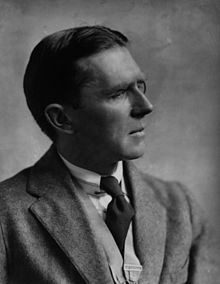Sir Leslie Patrick Abercrombie
|
Sir Patrick Abercrombie FRIBA |
|
|---|---|
 |
|
| Born |
6 June 1879 Ashton upon Mersey, Cheshire, England |
| Died | 23 March 1957 (aged 77) Aston Tirrold, Berkshire, England |
| Occupation | City planner |
| Spouse(s) | Emily Maud Gordon (m. 1908; d. 1942) |
| Children | 2 |
Sir Leslie Patrick Abercrombie FRIBA (/ˈæbərkrʌmbɪ/; 6 June 1879 – 23 March 1957) was an English town planner. Educated at Uppingham School, Rutland; brother of Lascelles Abercrombie, poet and literary critic.
Sir Patrick trained as an architect before becoming the Professor of Civic Design at the University of Liverpool School of Architecture in 1915, and later Professor of Town Planning at University College London. Afterwards, he made award-winning designs for Dublin city centre and gradually asserted his dominance as an architect of international renown, which came about through the replanning of Plymouth,Hull, Bath, Edinburgh and Bournemouth, among others.
Sir Patrick was closely involved in the founding of the Council for the Preservation of Rural England (CPRE). After its formation in December 1926, he served as its Honorary Secretary.
He is best known for the post-Second World War replanning of London. He created the County of London Plan (1943) and the Greater London Plan (1944) which are commonly referred to as the Abercrombie Plan. The latter document was an extended and more thorough product than the 1943 publication, and for Abercrombie it was an accumulation of nearly 50 years of experience and knowledge in the field of planning and architecture. He appears in the film The Proud City presenting his plan to the public.
...
Wikipedia
